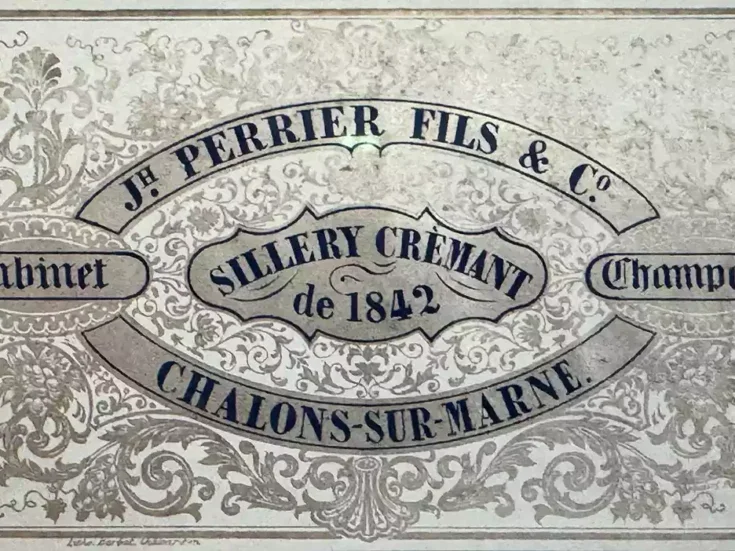
Alice Paillard describes making her Vintage wine in terms of an “adventure,” an opportunity to broaden the stylistic palette from the necessarily consistent Non-Vintage template and maybe a chance to challenge the reputation of the year in question. This certainly appears to be the case with her latest release, the 2014 Blanc de Blancs. Despite the general perception of 2014 being a modest, unchallenging year, Alice emphasizes the wine’s depth, specifically on its gastronomic potential. “2014 for us was a shock, a surprise,” she confides. “We did not expect this type of open and generous expression.”
A relatively cool year, overall, but not built in the “classic” late-harvest style of 2013, 2014 was precocious, edgy, and beset by problems engendered by irregular and unpredictable rainfall patterns. But not everywhere, pace Alice, who reveals that there was significantly less rainfall in the vineyards of the Côte des Blancs, the principal source of the fruit for this, the house’s tenth iteration of its Vintage Blanc de Blancs. The appeal of the Côte des Blancs fruit from this privileged enclave was such, indeed, that Alice once again decided to forsake a grand cru nomenclature for the wine, determined as she was to add some of the finely chiseled fruit from the premier cru of Vertus to the assemblage. Paillard’s Blanc de Blancs labels glory, therefore, in the somewhat eccentric idiosyncrasy of their Non-Vintage always meriting grand cru status, but when it comes to the Vintage wine, the accreditation is awarded only intermittently. Such is the spirit of adventure and gentle iconoclasm at work here.
How did Alice achieve this “surprising generosity” in her 2014? She describes the wine elegantly in terms of a “chiseled yet inviting gourmandise”—quite ambitious claims for a year that was agitated by a difficult midsummer, one might think. Alice is unabashed and cites site selection, harvest date, and careful manipulation in the winery as the key components of her armory, adding the now received wisdom that 2014 was significantly less impressive in Champagne for the red grapes. The blanc de blancs category should not be underestimated, however.
Founded in 1981, with winemaking duties handed over to Alice in 2018, the Bruno Paillard house wishes to be seen not as the jewel in the eponymous imperial crown (Paillard père runs the giant Lanson-BCC, inter alia) but rather as a standalone center of excellence. Owning more than 25ha (62 acres) across 19 crus (including 12ha [30 acres] of grand cru), the house covers well over 50% of its grape requirements. In the 2014 Blanc de Blancs, Vertus, as we have seen, plays a walk-on part, with more focus on the grand cru villages of Oger and Le Mesnil-sur-Oger, the latter providing a steely backbone, and the former, interestingly, seen as key in 2014, the slightly gentler, riper personality of its wines dictating the stylistic matrix. Alice is pithy and alliterative in her summary: “Le Mesnil for structure and salinity, and Oger for flesh and fruit.” Very well put. She describes the wine as “generous, fleshy, with an almost exotic luxuriance,” differing therefore from the cool and crystalline 2013 or the more overtly powerful 2012. There are also contributions from the villages of Chouilly and Cramant. Nothing from the modish Chardonnay plantations north of Epernay, however. “Not our style,” she says. Fair enough, and all the more so in 2014.
In the winery, there is focus on “fine-tuning,” with a general policy permitting the malolactic fermentation, harnessing complexity through 25% of barrel-maturation and adding sugar by way of dosage at between 3 and 4.5g/l, 2014 closer to the former, whereas 2013 approximated the latter. A low dosage, Alice points out, but she feels that the post-disgorgement aging will benefit from its disciplined grip, all the more so after such a generous tirage (seven years). The same can be said for the oak intervention. The barrels are not new, but they still provide a challenge for the wine: “Can the wine overcome the challenge?” she asks. “The oak must add a touch of a different color but not be a caricature.” The modus operandi is both subtle and precise on the one hand, creative and imaginative on the other; a pleasing combination. And a very pleasing wine—neither a shock nor a surprise, as it turns out.

2014 Bruno Paillard Blanc de Blancs
(100% Chardonnay; disgorged January 2023; dosage 3g/l)
Soft straw lemon, with a playful mousse, porcelain composure. The nose is dominated by oyster shells, hay, late-season apples, and hints of sourdough. Refined, upstanding, correct. A swirl loosens a swell of activity across the hull: white flowers, citric fruit, gingerbread; an invigorating wave of freshness, which is echoed down the palate, itself conspicuously dry, almost flinty in its youthful, cerebral rigor. The firm grip is met by a slight bitterness on the finish; today the gourmand character is discretion itself, clearly awaiting a little more bottle age for its full expression. All the components are in place, however, all poised and balanced, so it will only be a matter of time. | 93–94






